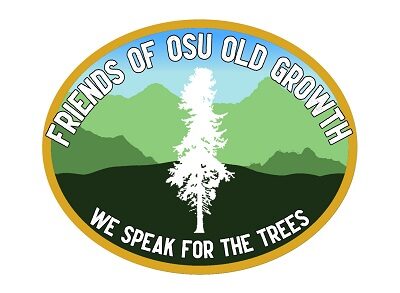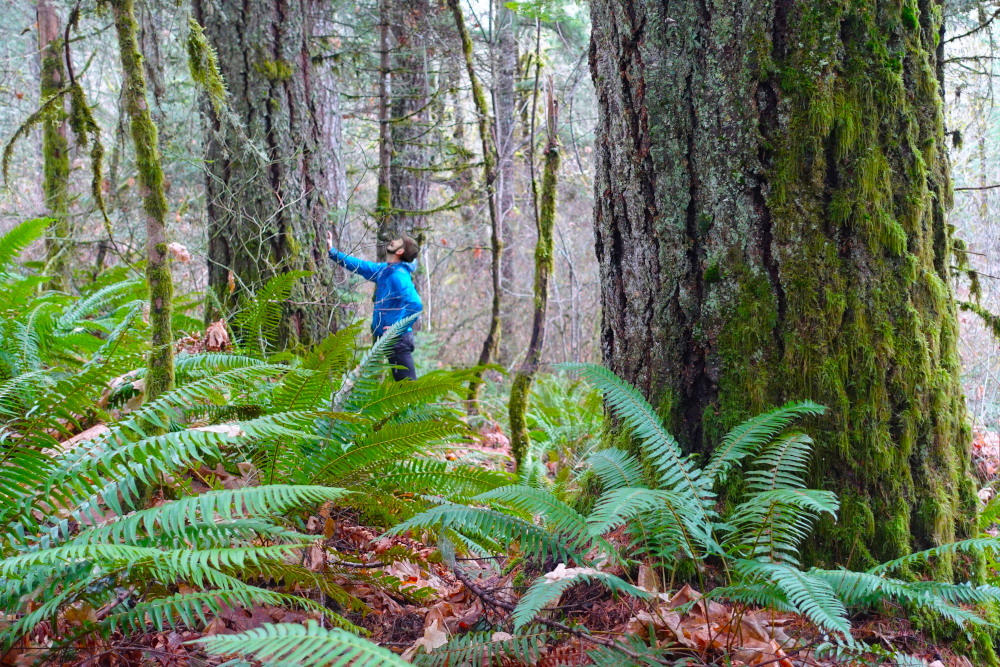
This ~80 year-old section of OSU’s Dunn Forest was recently sold to a private timber company (one of the College’s largest donors) for a relative pittance. The associate dean claims the sale was not considered by the board of trustees.
My two previous blog pieces dealt with what was essentially a swap of OSU Research Forest land with a private timber company. College leaders gave the 160-acre Spaulding Research Forest (located in the Corvallis Watershed) to Starker Forests, Inc. (one of the College’s largest benefactors). In return, Starker donated a ~277-acre inholding (surrounded by OSU’s McDonald Forest) to OSU. Both parcels of land have been heavily logged in the past and contain younger forest (~30 years for the Spaulding Tract and ~40 years for the Starker inholding). I will detail the third component of the land transaction (the sale of a large section of old forest in OSU’s Dunn Research Forest to Starker) in this blog piece.
It is important to note that College leaders negotiated these transactions in secret over a period of years. And despite having finalized the land transfers in September of 2023, they have shared very few details. The only official notice (buried on the College’s forest planning webpage) explains, “In return for the Starker tract, OSU transferred the Spaulding Research Forest, as well as approximately 170 acres of the Dunn Forest to Starker ownership.” The Spaulding Tract description and documents still appear on the College’s website as if nothing has changed.
When I first learned of the land transactions via OSU’s forest planning committee back in November, I sent the associate dean (Holly Ober) an email with a list of basic questions. These included:
“Please identify the specific parcel(s) in the Dunn traded to Starker”
“What are the current age classes of the parcels involved?”
“What was the decision process used to finalize this land swap?”
“Did the president and trustees discuss it in one of their public meetings or was it negotiated and decided behind closed doors?
“Will any portion of the new Baker Tract be set aside for conservation purposes (e.g. as buffer for the adjacent old growth stands)?”
“I understand you plan to log some of the newly-acquired Baker Tract…Could you please provide a map of the area to be cut and the age class of the forest?”
“Who made the decision to do this?”
“How can we trust that OSU will not liquidate (swap or sell) other public “research forests” without any public notice?”
After waiting more than two weeks for a response, I sent associate dean Ober a reminder. In her reply, she ignored all but one of my questions. This is a pattern that she and the dean have followed for years now. They simply refuse to acknowledge questions, despite repeated, polite requests. I have reminded them time and time again that this is a violation of OSU’s Core Values, but they don’t seem to care.
The one bit of information she did provide was the outrageous claim that the board of trustees did not consider the transactions (and were not required to do so). Since state law directs the trustees to provide transparency and public accountability, and their own bylaws require them to “preserve and protect [university] assets for posterity”, it’s hard to imagine them fulfilling their fiduciary responsibilities if they look the other way when College leaders divest of public lands in favor of an important donor.

This email screenshot is the only answer associate dean Holly Ober was willing to provide in response to my basic questions about the land transactions. College leaders have a long history of this kind of evasive behavior.

The North Fork of Berry Creek runs through the center of the OSU land sold to Starker Forests.
The associate dean’s evasive email tactics only heightened my curiosity. Why wouldn’t she at least provide basic details about the land in question months after the deals were completed? Knowing the Dunn parcel was approximately 170 acres in size, I began scouring property maps trying to find it. After some focused sleuthing, I had a hunch and contacted the Benton County Assessor’s Office. They were able to confirm the land had been sold to Starker and provided copies of the “Bargain and Sale Deeds” for all three parcels (including the Spaulding Research Forest and Starker land transfers).
The records show that while the Starker inholding and Spaulding Research Forest were, indeed, transferred without any money changing hands, Starker paid OSU $446,000 for the (~176-acre) Dunn Forest parcel. The documents also show that the OSU Board Chair, Kirk Schueler, signed both the Spaulding and Dunn Forest deeds on behalf of the Board. This shows that, contrary to the associate dean’s assertion, the trustees did consider the land transactions…unless the board chair is accustomed to signing important documents on the trustees’ behalf without consulting them (in which case they are not doing their fiduciary duty).
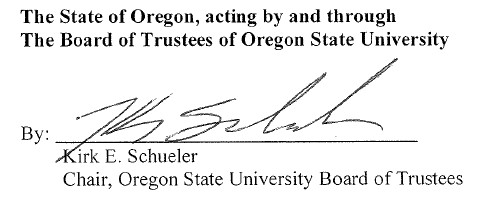
The signature of the board chair (an OSU trustee) on the “Bargain and Sale Deeds” for the land transfers. How can the associate dean insist the trustees did not consider the transactions when the chair signed off on their behalf?
Armed with this information and irritated by the associate dean’s obfuscation, I wrote the president and trustees an email seeking answers. I asked them seven basic questions (like whether the president had delegated the authority for the land transactions to College leaders, and whether the trustees had collectively or individually considered the land deals). I also forwarded the email I’d sent to the associate dean and explained that her evasive response diminished public trust. It has now been six weeks and neither the president nor the board chair have responded to my questions.

The Dunn Forest parcel sold to Starker contains a recreational trail that dates back several decades. This was one of the few intact sections of older forest in the Dunn.
In the meantime, other details have emerged. The College’s old forest inventory indicates the Dunn Forest parcel consists mostly of 80 year-old forest. This means the timber is considerably more valuable than either the Spaulding or Starker tracts. For comparison, a recent harvest of an 80 year-old stand a few miles west of the Dunn Forest netted ~$39,000/acre. At that rate, the Dunn parcel’s timber would be worth nearly $7M.
Another comparison can be made with a 2019 OSU harvest, where internal records show the College made a net profit of $460,000 by cutting 16 acres of older forest. Extrapolating those numbers, the timber on the Dunn Forest parcel would be worth just over $5M. From these rough estimates, it appears OSU sold the Dunn Forest parcel to Starker for roughly 1/10 the value of its timber.
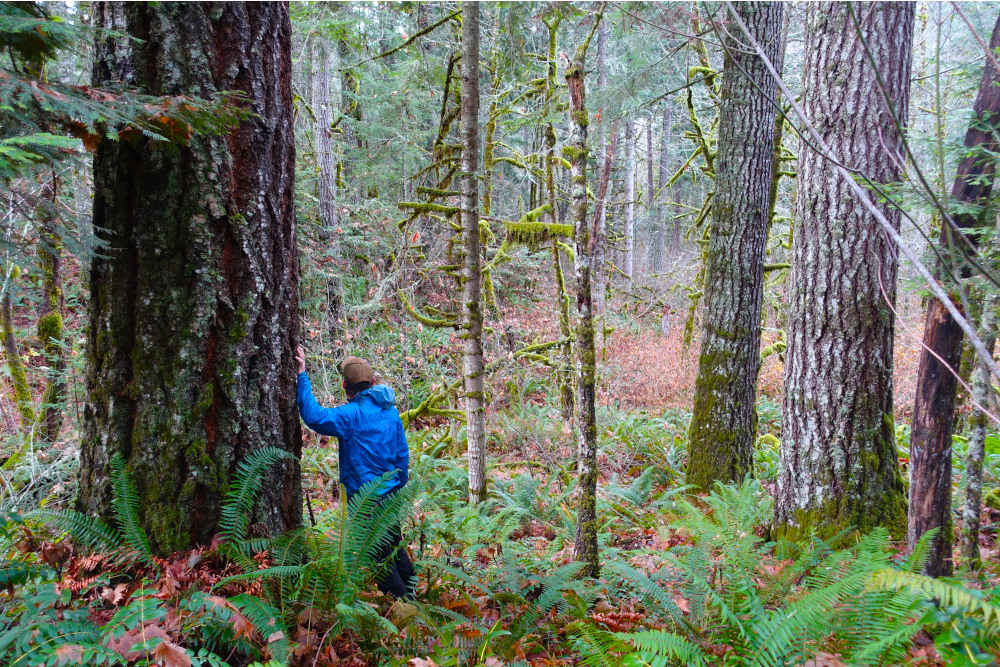
This older Dunn Forest parcel is ecologically diverse and well on it’s way to becoming old growth.
Since OSU’s leaders have not been forthcoming, I filed a public records request (PRR) on December 12th, 2023, seeking the communications and valuation basis for these land transactions. OSU’s public records officer has yet to provide a cost estimate, despite significantly exceeding the 15-day deadline mandated by Oregon’s public records law.
Time and again, I’ve seen OSU and other public agencies use the public records process as a shield to make it difficult and expensive for the public to get information that ought to be readily available. If the associate dean, board chair, or president had simply answered my questions, I wouldn’t have had to resort to the PRR process.
The public records law provides for a fee waiver in cases where there’s a compelling case to share information with the public. In practice, OSU has shown great bias in interpreting the law. The last time I filed a PRR, OSU eventually agreed to provide their “customary 25% fee reduction”. Even though they agreed releasing the info. is in the public interest, they are still demanding a substantial fee (for information that was formerly provided on the College’s website for free).

This response from OSU’s Public Records Officer violates the provisions of the law which states that each request for a waiver must be judged on its own merits. According to the Oregon’s Public Records Advocate, OSU should not be relying on a “customary reduction”. He has warned them about this in the past, but OSU continues to use this unethical tactic.
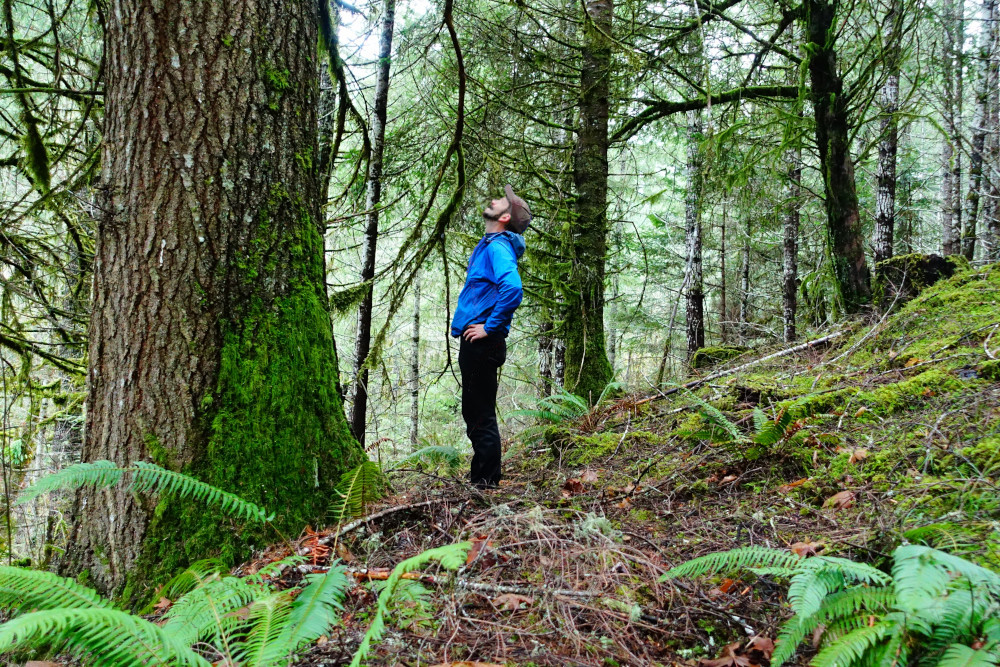
A large grand fir tree in the Dunn Forest parcel that was recently sold to a private timber company.
Without knowing the exact details of the land deals, we should all be deeply concerned by how OSU did this and the precedent it sets. The trustees have clearly failed to demonstrate the transparency and public accountability called for by state law. They have clearly violated provisions of their own bylaws which hold them to high ethical standards. They have failed to “protect and preserve…for posterity” these public lands not just by selling relatively rare older forest to a timber company for a ridiculously low price, but also by signing off on a deal that diminished the research forest lands by 59 acres. In short, they have shown a supreme dereliction of their fiduciary responsibilities.
By allowing College leaders to get away with their unethical behavior, the trustees have also set a very dangerous precedent. The future of all of these public forests is now in question. What’s to stop OSU from the wholesale divestment of other public forests on behalf of their timber benefactors? These unethical dealings profoundly undermine trust in OSU and further erode the integrity of College leaders. When will they understand the importance of public trust and follow their own ethical standards (and the law)?
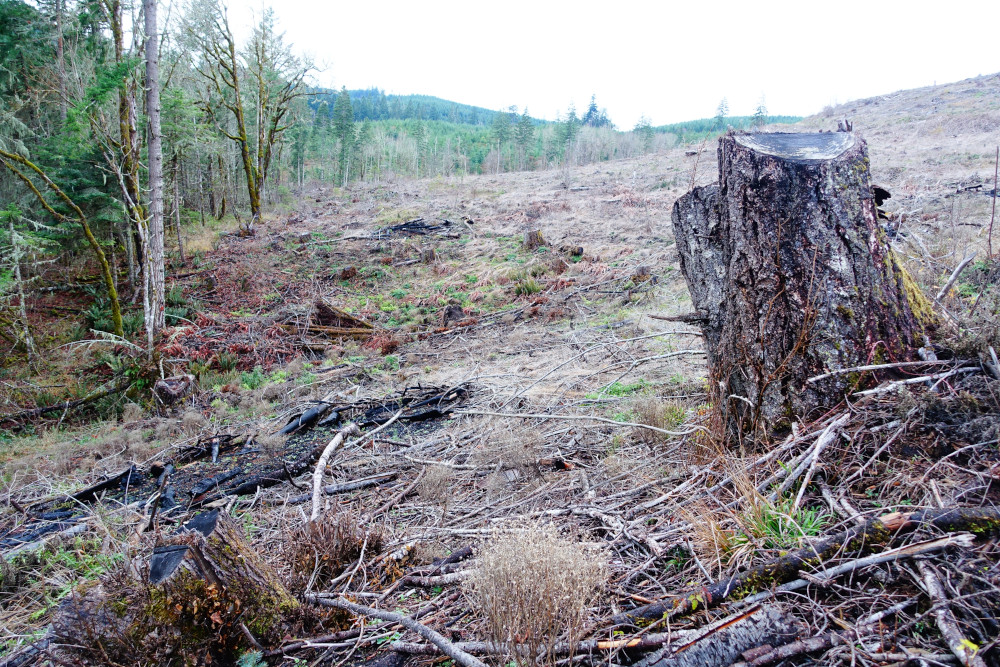
This parcel of Starker Forests property is directly adjacent to the Dunn Forest land that was recently sold to the timber company. The decision of College leaders to sell this older forest virtually ensures it will be destroyed.
